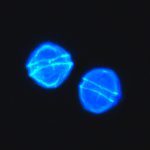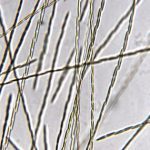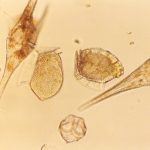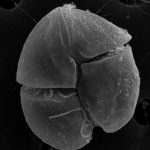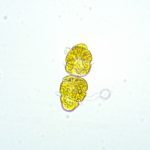Harmful Algal Blooms
Harmful algae are microscopic, single-celled plants that live in the sea. Most species of algae or phytoplankton are not harmful and serve as the energy producers at the base of the food web, without which higher life on this planet would not exist.
Occasionally, the algae grow very fast or "bloom" and accumulate into dense, visible patches near the surface of the water. "Red Tide" is a common name for such a phenomenon where certain phytoplankton species contain reddish pigments and "bloom" such that the water appears to be colored red. The term "red tide" is thus a misnomer because they are not associated with tides; they are usually not harmful; and those species that are harmful may never reach the densities required to discolor the water. Unfortunately, a small number of species produce potent neurotoxins that can be transferred through the food web where they affect and even kill the higher forms of life such as zooplankton, shellfish, fish, birds, marine mammals, and even humans that feed either directly or indirectly on them.
Scientists now prefer the term "HAB" to refer to bloom phenomenon that contain toxins or that cause negative impacts.

